The new holiday map: 10 under-the-radar destinations you can definitely visit right now
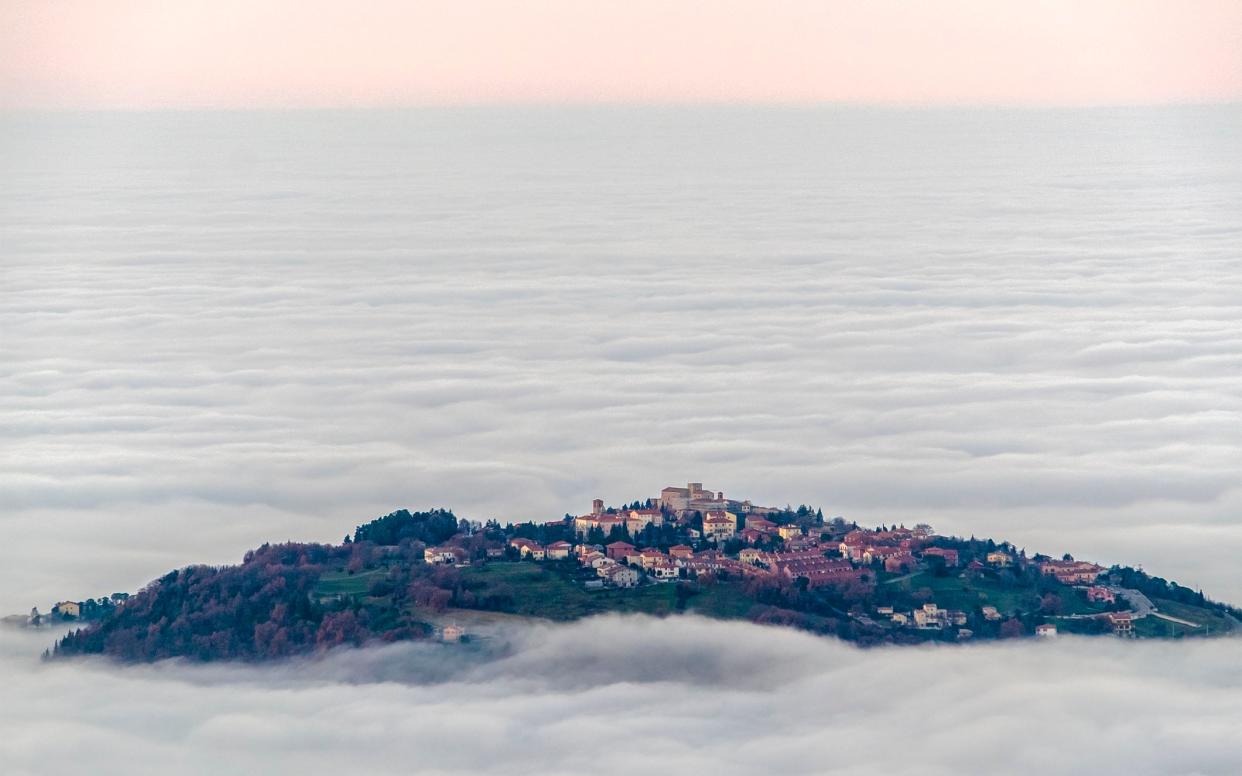
Foreign travel is back. With quarantine rules waived for a tranche of destinations, summer holidays are here again. Many of the perennial favourites – France, Italy and Croatia – are on the Foreign Office’s restriction-free ‘safe list’; while others – mainland Portugal and Spain, for example – remain on the naughty step.
But examine that safe list more closely and you’ll notice some exotic names plus several destinations that, while familiar, appear offbeat as holiday choices. You’ve almost certainly heard of places like the Faroe Islands or Liechtenstein. You may have hazy impressions of both. But have you actually visited?
Now is the time to go, which is why we’ve compiled this guide to ten unusual destinations you ought to consider this summer. They may seem a gamble after three months in lockdown. Holidays are precious. In normal times, they afford us a rare opportunity to park modern life for a while. Brave is the holidaymaker who takes a punt on somewhere new with their few weeks away. These, however, are not normal times. I don’t know about you but my life has been parked for quite long enough, thanks.
There’s nothing wrong with seeking reassurance in your relaxing, go-to destination, of course. But if we want them to be, holidays can be about more than relaxation. By freeing us of the routines bred by familiarity, offbeat destinations offer us an opportunity to live our best lives: to be spontaneous, to open up to new experiences and cultures and people, to connect with the world. Perhaps even to reconnect with a part of ourselves.
Seen like that, a holiday somewhere unusual doesn’t seem quite such a punt after all. In fact it sounds like rediscovering what made travel so stimulating in the first place. And heaven knows we’re in the market for some of that.
By James Stewart
1. The Faroe Islands
When released in November new James Bond film, A Time to Die will include an island walled by cliffs and ringed by peaks like a crown. It looks like a CGI setting for Valhalla. Actually, this magical island is Kalsoy and there are 17 more just like it in the Faroe Islands.
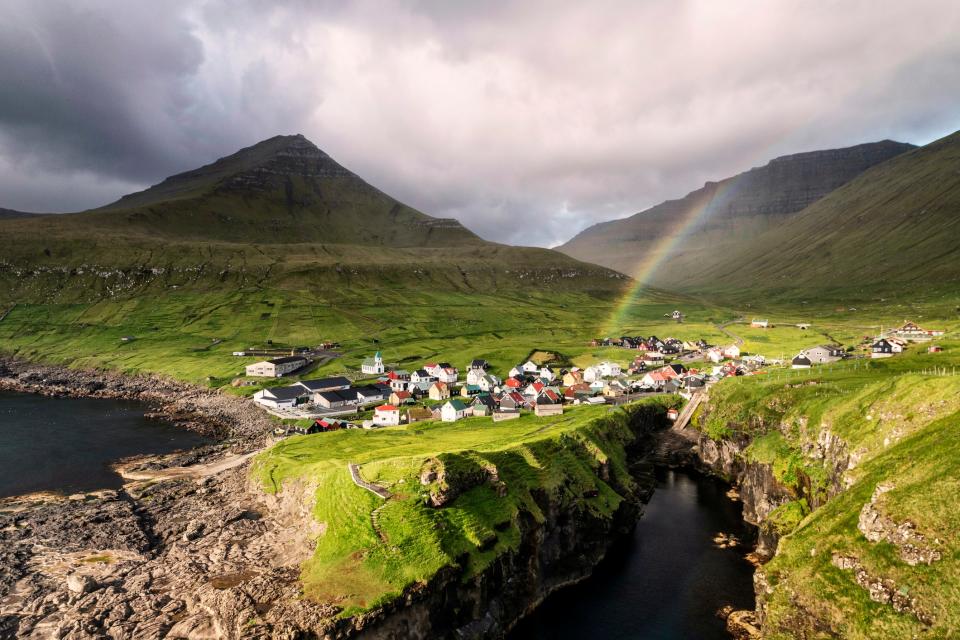
With summer temperatures averaging 13˚C, this self-governing Danish archipelago is not an obvious choice for a summer break. So changeable is the mid-Atlantic weather that the lovely, laidback Faroese make fond jokes about their home as the “Land of Maybe”. Maybe plans will come off. Then again, maybe not. No matter. You’re here for the scenery.
To visit the Faroes is not to explore (a cinch, incidentally, thanks to bridges, road tunnels and ferries) so much as journey though a Viking saga at the edge of the world. On my last trip I watched crazily planed islands capsize into the sea and, beside a turf-roofed church at Saksun, saw a waterfall flow upwards, spun into the sky by the wind. Gásadalur village could be a set from Game of Thrones but no one would believe it. Surrounded by ocean, everything is lit by slippery, ethereal light.
The walking is spectacular if your legs are up to the inclines. The birdlife too – a boat tour beneath the gull-wheeling Vestmanna cliffs is genuinely astonishing.
That’s not to say a Faroes holiday is all outdoors. Within the Hobbity core of capital Toshaven, you can shop in the Scandi boutiques of local creatives – I can recommend knitwear outlet Gudrun & Gudrun (gudrungudrun.com). You’ll eat well too: sensational fish, wind-dried skerpikjøt lamb and, at Michelin-starred Koks restaurant (koks.fo), traditional cured dishes refined to art. Still, it’s the landscape which haunts your dreams. Its savage empty beauty is like ocular tinnitus – you never quite get used to it.
There’s just one thing. Smart social media campaigns have seen the Faroes tagged the new Iceland. The first international hotel, a Hilton, is due this year. I wouldn’t hang around if I was you.
Discover the World (01737886228, discover-the-world.com) has a 7-night Island Hopping Adventure, including car hire, excluding flights, from £908pp B&B.
By James Stewart
2. Lithuania
When it comes to visitor interest, pint-sized Lithuania, which shares borders with two large neighbours, Poland and Belarus, as well as the geographical oddity of Russian-administered Kaliningrad, punches above its weight. Although stretching just 200 miles both north-south and east-west, this Baltic nation has plenty of easily-reached attractions, making it perfect for a long weekend or an extended break.
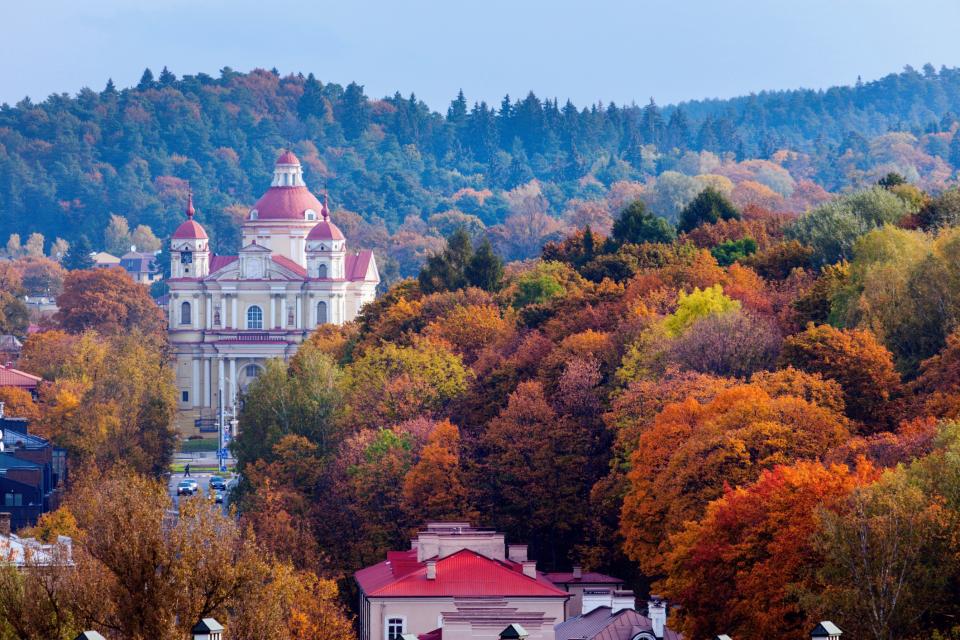
The capital, Vilnius, has changed little since my first visit in 1990 and its Old Town is UNESCO-listed for good reason. You don’t need to know your apse from your buttress to admire the Gothic, Baroque and Renaissance architecture of its churches, cathedral and the university’s Grand Courtyard. It’s a quirky city – check out the Frank Zappa statue – and summer dining alfresco is a way of life. Its second city, Kaunas, has a historic heart of equal charm, though the Devil Museum, dedicated to images of witches and associated dark mythological figures, will shake you out of your reverie. With Lithuania somewhat further ahead of the curve than the UK, all these places have reopened now, some with social distancing measures in place.
Beyond the city, the country’s substantial hinterland, of forests, lakes and meadows, is also well worth exploring. Your to-do list should include the redbrick 14th-century castle of Traikai, immediately to the west of Vilnius and marooned on Lake Galvė. Beyond here, the country’s flatlands unfold and are perfect for cycling – keep an eye out for elk and wild boar - and for working off the calorific food, which includes didžkukuliai (potato dumplings stuffed with bacon).
Near the northern city of Siauliai you’ll find the Hill of Crosses, a Catholic pilgrimage site that continues to grow and featuring more than 100,000 crosses, as well as effigies and Virgin Mary statues.
While most beach-lovers head to southern Europe, those in the know will be exploring the wilderness of Lithuania’s magnificent and unheralded north coast. Here you will find the endlessly elongated sand dunes of the Curonian Spit. This oversized sand bar throws a protective arm around the shoreline and its sheltered lagoons offer superb seabird spectacles.
Regent Holidays (regent-holidays.co.uk; 020 7666 1244) offers a 10-day Fly Drive holiday from £995 per person, including return flights, car hire and accommodation.
By Mark Rowe
3. Monaco
There’s nowhere else like Monaco. Occupying just under two square kilometres and the world’s second-smallest independent state, the principality packs a lot in while simultaneously being one city-break destination you really can ‘do’ in a weekend.
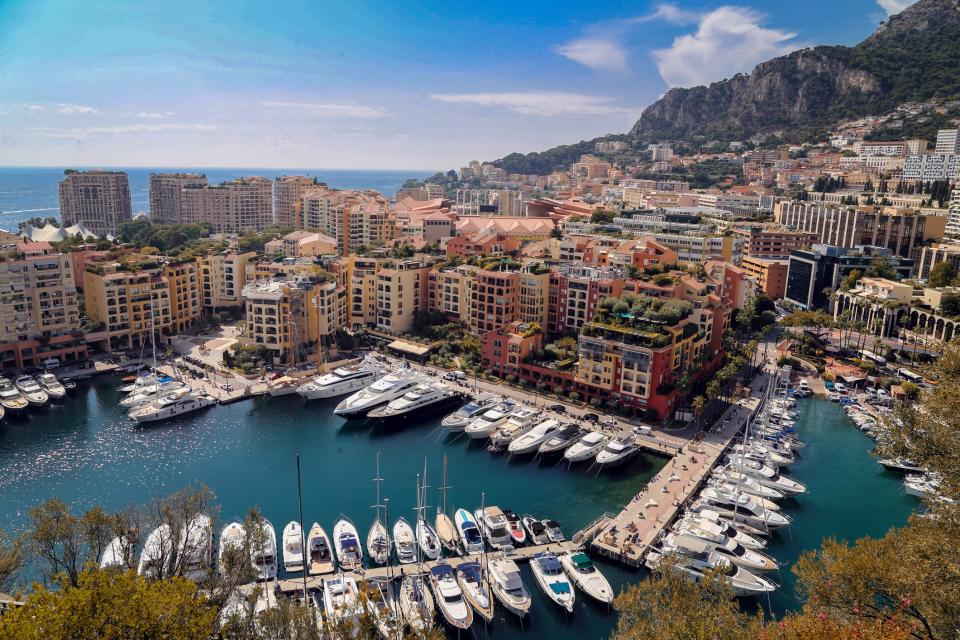
Whenever you might visit, the wealth for which this enclave is renowned is most conspicuously and unabashedly displayed at the Place du Casino in hilltop Monte-Carlo. Buffered by luxury hotels and facing the Belle Époque casino, the square is encircled daily by a carnival of supercars and socialites. I like to linger over a drink on a sunny terrace - the recently renovated Hotel de Paris is a favourite address - to take in the parade of Bugattis and ill-advised plastic surgery.
Showboating, figurative and literal, also takes place during the Monaco Grand Prix and September’s Monaco Yacht Show, when the world’s most desirable superyachts cluster in and around Port Hercule, but for all its glitz and grandeur this is a destination that still - perhaps surprisingly - aims to cater to everybody. Tourism is a vital cog in the local economy and more affordable restaurants and bars serve day-trippers who pile in from nearby Nice and the many locals who live life relatively simply.
Among the attractions likely to win such visitors over are the predictably grand, 110-year-old Oceanographic Museum, with its aquariums and thousands of specimens on display, and the Jardin Exotique, with its spread of succulents, towering cacti and sea views almost always a dazzling blue - the sun seems forever to shine on Monaco.
Nearby - a description that admittedly applies to everything here - are the Palace, whose State Apartments are open to the public in spring and summer, and Monaco’s cathedral, where the tombs of Princess Grace and Prince Rainier lay as a sombre counterpoint to a grand high altar and Episcopal throne carved from white Carrara marble.
British Airways (britishairways.com) is offering three-night weekend stays at the Fairmont Monte Carlo (£705pp) and the Hotel de Paris Monte-Carlo (£1,147.50pp), room-only, including flights from Heathrow to Nice, plus luggage allowance, from August 21 to 24.
By John O’Ceallaigh
4. Poland
Poland is a proud and passionate nation. It brims with history and culture, with the music of Chopin and the scent of lilac, with markets bursting with local cheeses, bunches of dill and baby broad beans, peeled and green, jostling with plump, red, radishes.
Summer stretches hot and sultry through bucolic countryside studded with ‘snopki’ – characteristic stacks of hay, immortalised on canvas by Polish artists over the centuries – while in the old streets of Wrocław, Poznań and beautiful Kraków, sunrays dance off cobbles. Stop in Kraków’s Market Square to hear the ‘heynal’ play on the hour, every hour – a melodious bugle call whose sudden finish commemorates the death of a trumpeter in the 13th century.
The city is also home to Leonardo da Vinci’s ‘Lady with an Ermine’, considered by many to be his masterpiece and exhibited in the Czartoryski Museum. Nearby lie the extraordinary salt mines of Wieliczka where underground chapels and chandeliers were hewn from salt centuries ago.
For amber, head to Gdańsk on the Baltic coast,where Goldwasser vodka comes from, its gold flakes swirling in the cardamom-scented syrup. For nature, go walking in the clear air of the Tatra Mountains, where trying the local oscypek cheese is a must; or immerse yourself in the lake region of Mazuria, where the forests are carpeted with wild strawberries and beavers still roam or the mountains of Zakopane where carved wooden houses dot the slopes.
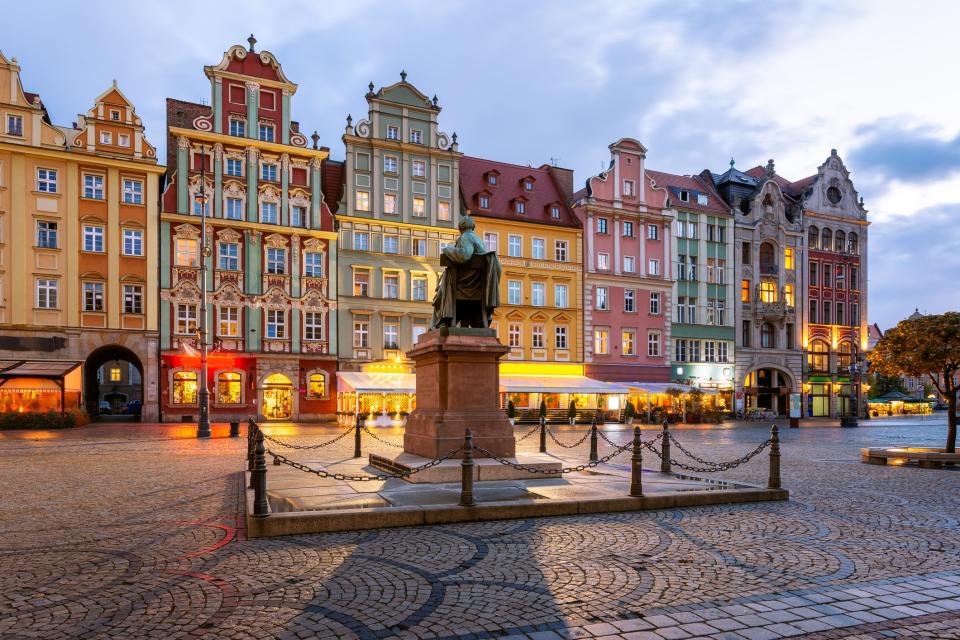
And don’t ignore Warsaw, demolished so brutally at the end of the Second World War but rebuilt painstakingly to become the modern, vibrant capital it is today, with its dynamic arts scene, opera houses and numerous museums (dip into the museum of local girl Marie Curie). And in between sightseeing stop off at one of the many new, industrial chic eateries to taste Poland on a plate.
Regent Holidays (regent-holidays.co.uk; 020 7666 1244) offers a Kraków and the Tatra Mountains holiday from £545pp for seven nights, offering a chance to delve into Kraków’s multi-layered history before trekking in the Tatras.
By Mary Lussiana
5. Gibraltar
“A little piece of Britain in the Med” is how Gibraltar is billed, but for me growing up there in the 1970s it was the Rock’s “otherness” that stood out. On the night we arrived, three camels from Morocco loped down Main Street as part of the Three Kings Cavalcade that still marks Epiphany (sadly, no longer with camels) and life on the Rock was a lesson in multiculturalism.
Religious buildings were useful landmarks when exploring by bike: the Cathedral of St Mary the Crowned (Roman Catholic), the Anglican Cathedral, the Flemish Synagogue and the Great Synagogue (a place of worship for Jewish merchants from Tetouan in the 1720s), joined long after my time there by a Hindu temple and the Ibrahim al Ibrahim Mosque, funded by Saudi royalty.
I soon heard snatches – as you will – of Gibraltar’s unique language, Llanito. Alternating between English and Spanish, it includes such words as kuecaro (porridge, from Quaker Oats), focona (frontier, from the Four Corners area near the Spanish border) and chachi (brilliant, after Winston Churchill).
At a friend’s house one Easter I tasted bollo de harnasso, a sweet dry bread flavoured with aniseed and topped with a hard-boiled egg, part of a food tradition rich in Maltese, Genoese and Portuguese influences. Yes, there are red English phone boxes, Irish pubs and bobbies in British uniform, plus a Morrisons, a Marks & Spencer and lashings of military history, but it is Gibraltar’s layering of cultures that makes it well worth a visit.
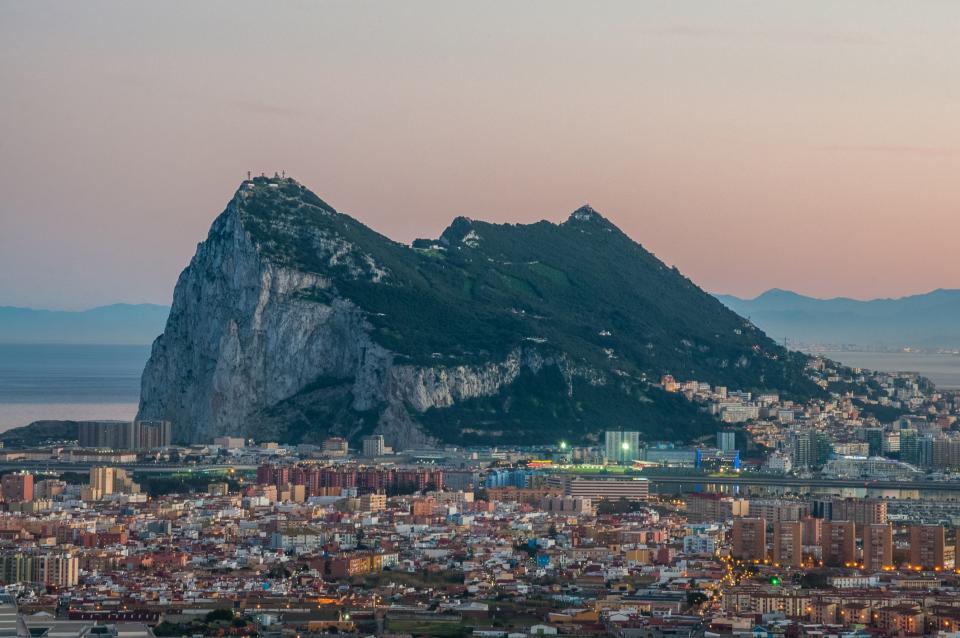
At Gorham’s Cave, a Unesco World Heritage site, there are signs of more ancient layering. The complex, which can be visited in small groups, contains evidence of occupation by Neanderthals and early modern humans. Have a pie and a pint at the Angry Friar if you must – but there is more to Gibraltar than Britishness.
Rooms at the Rock Hotel (rockhotelgibraltar.com) cost from £140 per night in July and August. British Airways (britishairways.com) flies direct from London Heathrow to Gibraltar with fares in August from £58 one-way.
By Andrew Purvis
6. Switzerland
Hailed as the safest country to visit post-coronavirus, Switzerland is not exactly under-the-radar, but for British travellers it’s always been more of a ski destination than a summer-holiday favourite. With whopping great Alps taking up more than half of the country, Switzerland’s real pull is its mountains.
Hike it, bike it, climb it, swim it: the Swiss are obsessed with outdoors and altitude. And with such obscenely beautiful backdrops, who can blame them? Ranked by Forbes as the safest country in the world for Covid-19, this clean, green, eco-minded land is ripe for post-lockdown rediscovery. And if you’re not ready to fly just yet, take the Eurostar to Paris, where TGVs race to the major Swiss cities in three to four hours.
Getting from A to B is a breeze once you arrive, with little red trains curling up to improbable heights. But if a road trip is more your bag, give the Grand Tour of Switzerland a whirl. Rent a car - or, more sustainably, an electric one – and plot your route on this monster of a drive, knitting together highlights from sky-scraping glaciers to corkscrew-like mountain passes, vineyards to castles. It’s 1600km of gear crunching and wows.
Beyond much-hyped ski resorts like St Moritz and Davos and Zermatt, Switzerland dishes up some deliciously remote regions for a summer escape. In lovely Appenzellerland, an hour’s drive from Zurich, dairy country rolls to the ragged limestone peaks of the Alpstein massif and the half-timbered villages are pure bedtime story stuff.
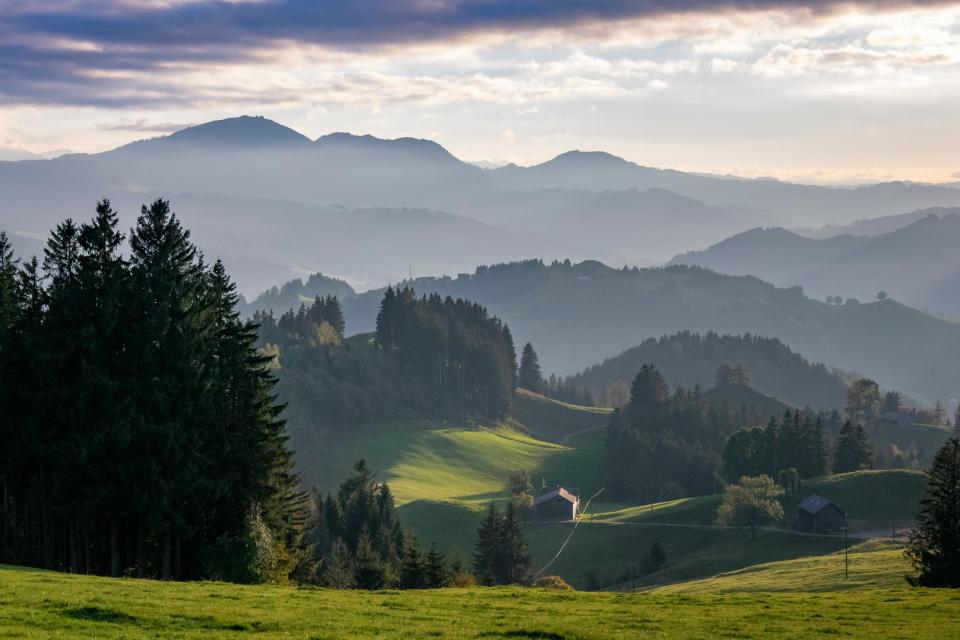
Where Switzerland snuggles up to Italy in the country’s southeast, the one-and-only Swiss National Park in Graubünden is like a bite-sized Canada, with big Alpine wilderness, piercing blue lakes and ibex patrolling the hiking trail-riddled heights. There’s more to Valais than the Matterhorn, too: Bettmeralp, for instance. High above the Rhône Valley this log-chalet Heidi heaven has peace, quiet and the colossal Aletsch Glacier on its doorstep.
For back-of-beyond stays with bright night skies across the country, try the new Million Stars pop-up hotels. Stay in an apple cart, a beehive-shaped glamping pod or a coolly converted cable car – and thank your lucky stars you chose Switzerland.
Macs Adventure (macsadventure.com) offer self-guided walking holidays to Switzerland, including an eight-day, seven-night ramble on the trails of the remote Val d’Annivers in Valais. Prices start at £1050 when you share a double room.
By Kerry Walker
7. Andorra
It feels a long way from Barcelona airport to Andorra La Vella. Probably because it is. Three hours and 130 miles – most of them uphill. The journey is, however, not short on visual appeal, flirting with the Natural Parks of Sant Llorenc del Munt i L’Obac and Cadi-Moixero – both of them awash with craggy majesty – before facing up to the full ridgeline of the Pyrenees, and one of Europe’s highest borders. By the time you have swapped the Catalan capital for the Andorran, you’ve gained 1,023m (3,356ft) in altitude.
There is no easier way to this elevated principality. The road up from France is even more curved; Toulouse no nearer. But this is the point. Andorra has survived as an independent entity between two European titans precisely because it is a hermit on a ledge. True, by odd arrangement, the French president is one of two co-princes atop its political tree (the second is the Bishop of Urgell in Spain) – but ask an Andorran who rules their roost, and they will talk of a self-determination that dates (with the occasional interruption) to 1278.
Yet if its height has kept it out on its own, it also increasingly attracts tourists to what are some of the less-known slopes in the Pyrenean realm. In winter, they come for the ski zones of Vallnord and Grandvalira. In summer, they arrive, in growing numbers, to go up these same gradients, by pedal power.
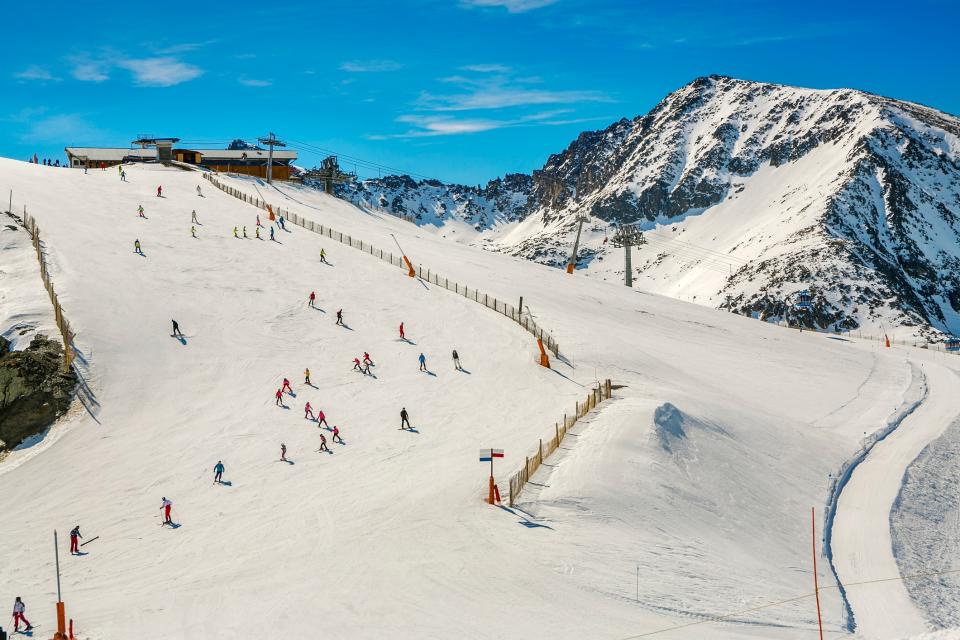
The likes of the Coll d’Ordino and the fearsome Coll de la Gallina may not have the kudos of Grand Tour climbs such as the Col du Tourmalet (across the French border), but they offer angle aplenty to test strength, sinew and stamina – and are ridden on (generally) quieter highways. If you can describe these high-rise ribbons of tarmac as “highways”. As ever in Andorra, there is glory in isolation.
Love Velo (020 7157 1519; lovevelo.co.uk) offers a self-guided five-night Andorran cycling holiday from £595 a head, including hotel accommodation in La Massana, bike hire and transfers from either Barcelona or Toulouse airports. Flights extra.
By Chris Leadbeater
8. Liechtenstein
What do you do when you are one of the tiniest countries on your own continent; a parcel of land so diminutive that the eyes of the world tend to skim right over you, seeing only Switzerland on your left flank, and Austria on your right? What do you do when your contribution to the planet’s international jigsaw is a mere 62 square miles; so small that you pull in but 85,000 tourists each year – scarcely more than Paris welcomes every day?
If you are savvy, you make a virtue of this smallness – then point out that visitors can see not just some of you, but all of you, in a single trip. Fear of missing out? Not here, friend.
This was the clever trick played by tourism authorities in Liechtenstein in 2019 as they attempted to salute 300 years of the principality’s independence – while also boosting its profile. The idea they conjured – the Liechtenstein Trail – wins no prizes for nominative inventiveness, but it does an excellent job of celebrating the Alpine Lilliput which frames it. Simply, in “stretching” from Balzers to Ruggell, it runs from the south tip of the country to the north – wandering into all 11 of its municipalities – in a matter of 46 miles.
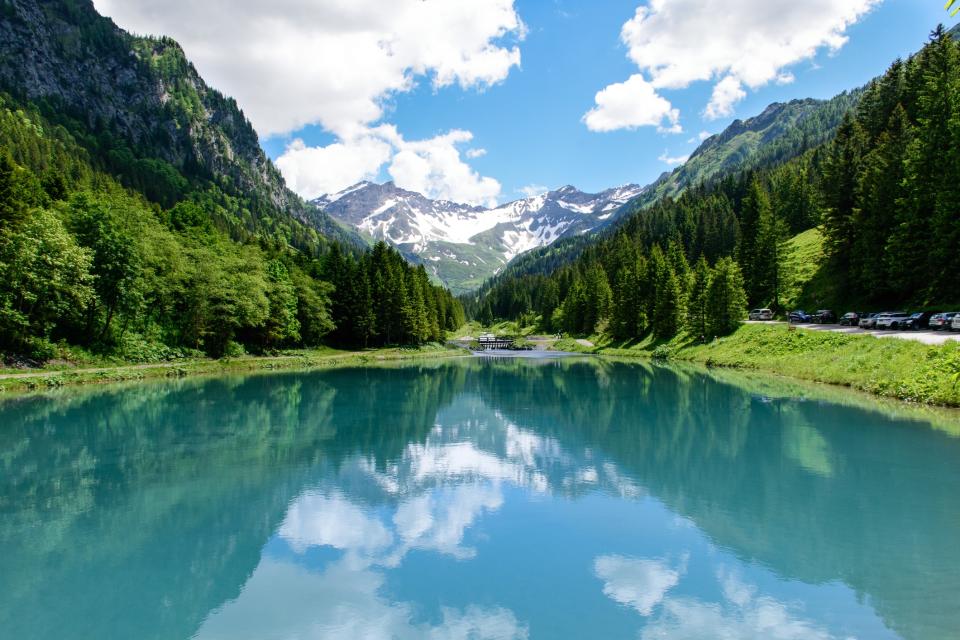
You don’t need to be a devoted hiker to trace the route. Just a camera and an appreciation of scenery that veers from the high peaks of Three Sisters mountain and the low waters of the Rhine Valley to the ruins of the 12th century Schalun Castle on its lonely hillside. The trail also ebbs through Vaduz, the national capital – which, though hardly a sprawling metropolis (home to fewer than 6,000 souls), is a good place to rest tired legs over dinner.
The easiest way to reach Liechtenstein is to fly to Zurich, 68 miles from Vaduz. BA, easyJet (0330 365 5000; easyjet.com) and Swiss (0345 601 0956; swiss.com) serve it from various UK airports. See tourismus.li/en/activities/the-liechtenstein-trail for trail details, including hotels on the route (for instance, the Residence Hotel in Vaduz; residence.li).
By Chris Leadbeater
9. Luxembourg
It is perhaps when you first stand on the Pont Adolphe that you realise you are not in Kansas. Well, not in Kansas specifically, nor in Oz, but not in the image of Luxembourg City that you had in your head as you flew in either – some blandly tasteless slice of Euro cheese, all bankers at lunch and bureaucrats on expenses. But there you are, with the land plunging to the River Pétrusse below your feet, and your preconceptions tumbling with it.
The capital of the “Grand Duchy” that sits between France, Germany and Belgium may be Europe’s most underrated city-break option – partly because the Pont Adolphe, a vastly graceful stone arch, constructed in 1903, is only one facet of its beauty. Indeed, you might go further, and describe Luxembourg as the European capital with the most dramatic geographical context. It perches above not one but two rivers (the Alzette is the other); twin channels whose currents long ago cut a deep gorge into the city’s sandstone foundations. It crashes down 70 metres as houses and churches wobble on the cliff edges.
And what houses. And what churches. There is a stateliness to Luxembourg befitting its detailed history as a buffer nation between major powers. Its modern art museum Mudam (mudam.com) is built into the remains of Fort Thungen, the city’s medieval watchdog; Notre-Dame Cathedral is only a little less splendid than its Parisian namesake in its 17th century Baroque finesse.
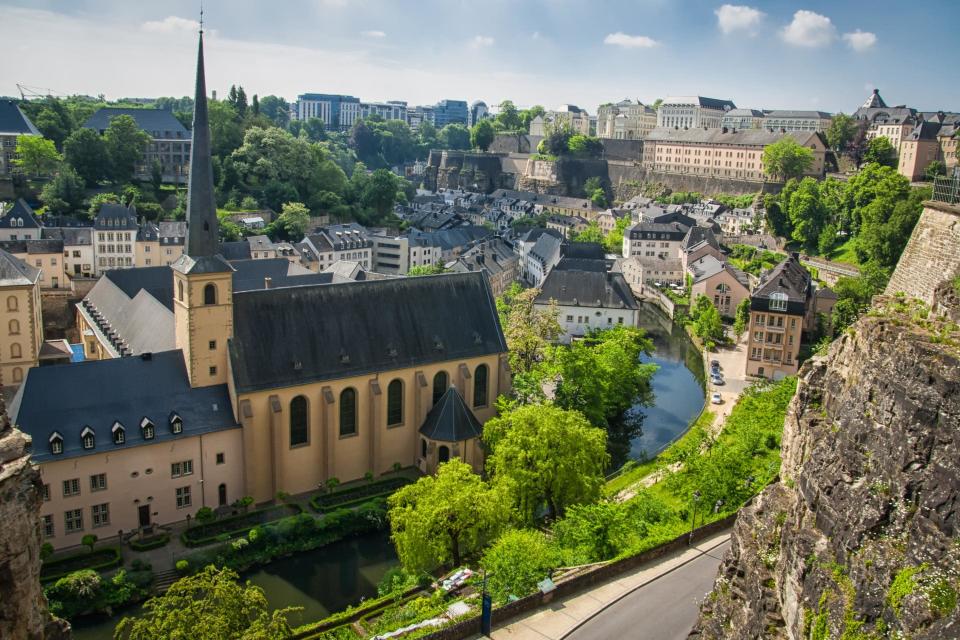
Comparisons to the City of Light also dance around the central Place Guillaume II. Take a seat at a table stationed outside one of the restaurants on its perimeter – perhaps the seafood specialist Brasserie Guillaume (brasserieguillaume.lu) – and you could, at a squint, be settling into a Marais evening. Bland? Mais non monsieur...
A three-night long weekend at Hotel le Royal (a five-star with a spa, a pool and an excellent in-house restaurant), flying out of Heathrow on August 13, costs from £351 per person - with British Airways Holidays (0344 493 0787; britishairways.com/holidays).
By Chris Leadbeater
10. San Marino
If somewhere looks Italian, its name sounds Italian, it speaks Italian, eats like an Italian and is surrounded by Italy in all directions, you may reasonably assume that it is... Italian.
But San Marino is not Italian. Indeed, despite its location – 90 miles east of Florence, 75 miles south-east of Bologna, a mere eight miles inland from Rimini – it has never been Italian. According to legend, it emerged from Rome's control in 301AD – an Apennine pinprick on the face of Diocletian's empire – and has (largely) remained aloof ever since, even as Italy formally congealed around it in 1861. The turbulence of European politics wiped the independence of other city-states – Venice, Dubrovnik – from the map. San Marino planted its feet against the tides of history. Little feet. Just 24 square miles of feet.
Not that you can really tell the difference between the refusenik and its all-encompassing and only neighbour. The Palazzo Pubblico – the 19th century town hall in the eponymous capital – has an ornateness that would not look out of place in Venice. The 11th century Guaita Fortress, preening upon Monte Titano, is as swooningly photogenic as any hilltop citadel in Tuscany.
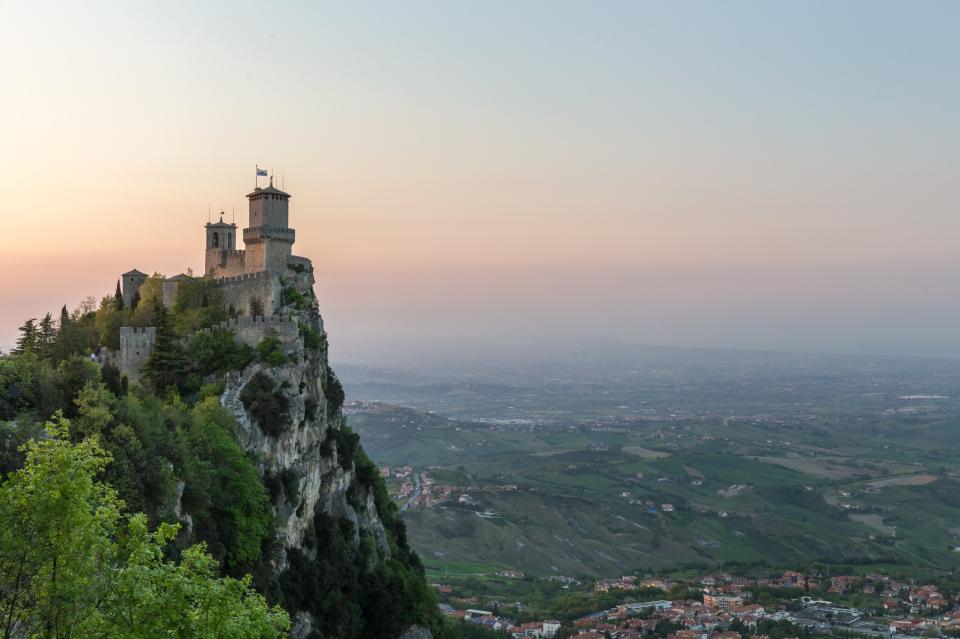
The 19th century Basilica di San Marino bears no comparison – in size or status – to St Peter's, but with its neoclassical facade and elegant belltower, has a pomp and piety fully in line with Vatican tradition. The Piazza della Liberta does not have the swooping space of Siena's Piazza del Campo, but the widescreen panorama it offers, of tiled rooftops and hazy mountain ridges, is a greater mental postcard than the Palio races.
You can dine well of course – the Michelin-starred Ristorante Righi (ristoranterighi.com) dispenses all the ricotta richness you would expect in such a corner of the planet. Just – very literally – remember your place. The world's oldest republic appreciates the gesture.
Trailfinders (020 7938 0210; trailfinders.com) offers a five-day “Experience San Marino” getaway – from £949 per person including flights (to Bologna).
By Chris Leadbeater
For the full list of restriction-free countries you can visit now, updated daily, see our map.

